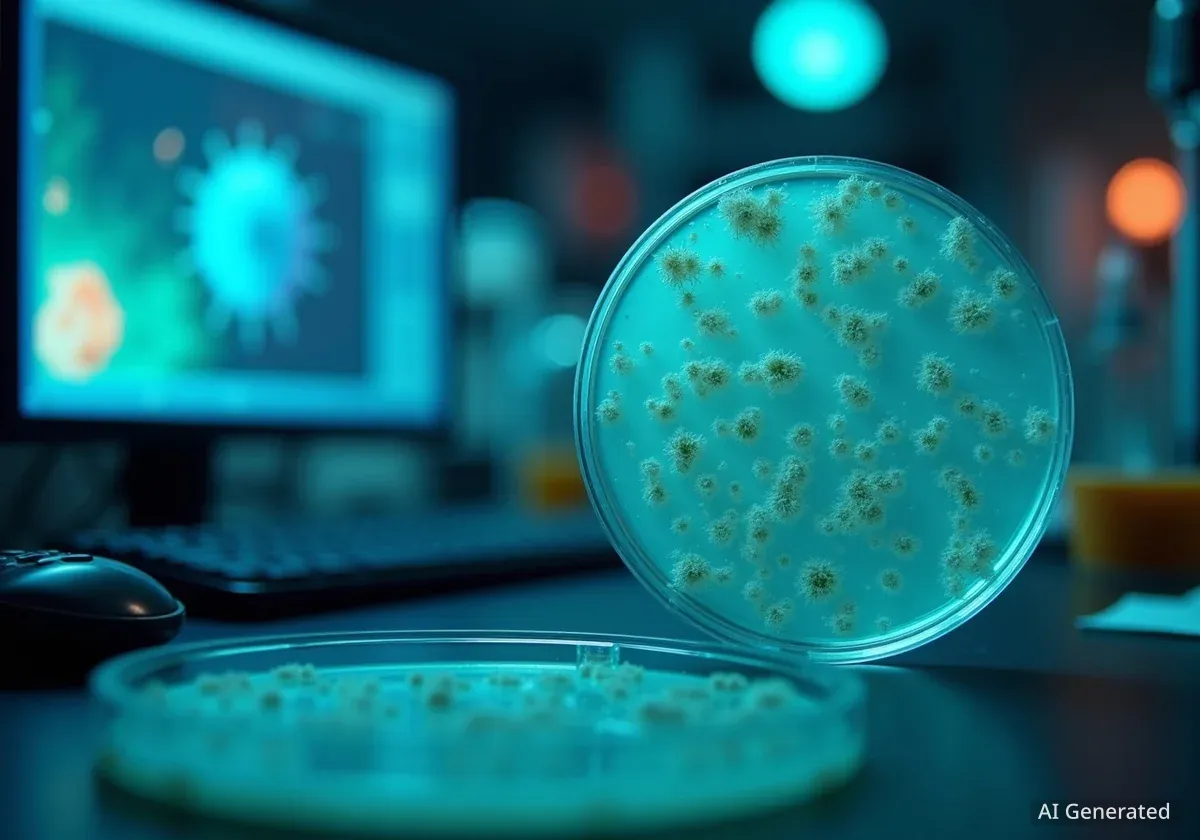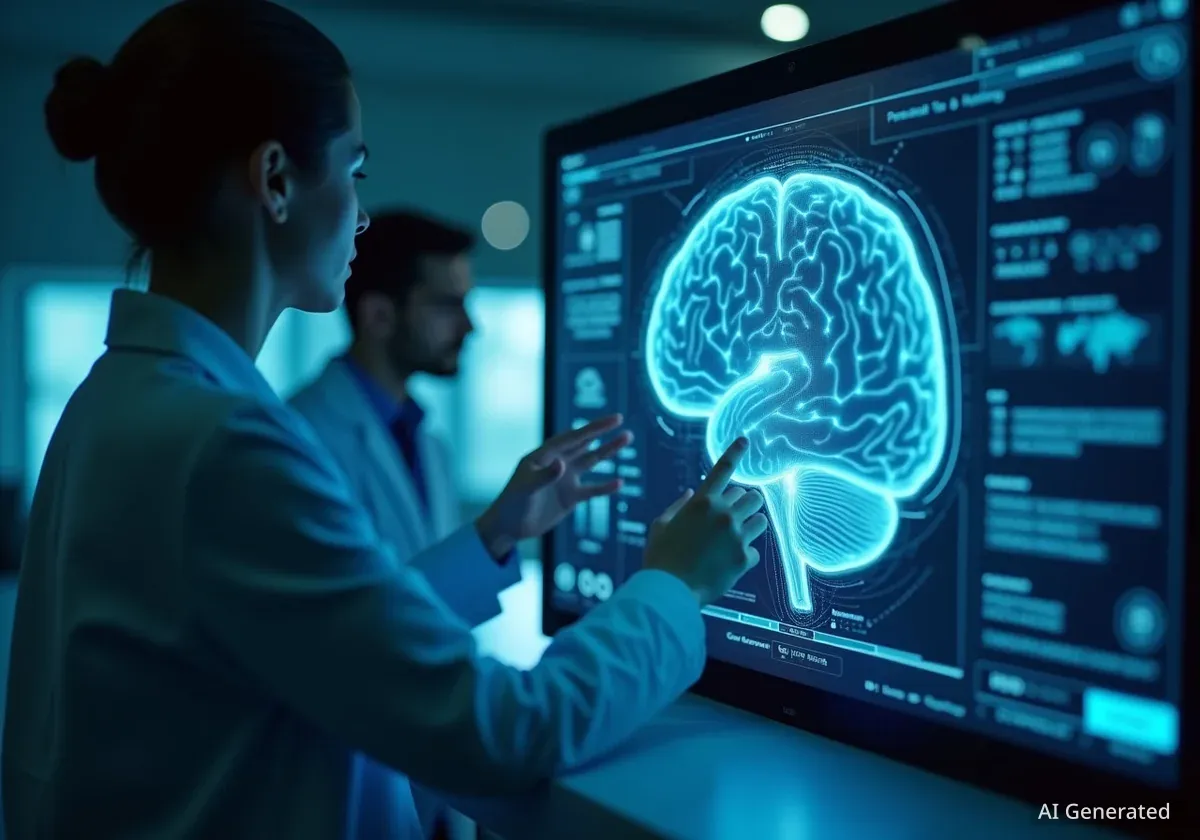Researchers have successfully used artificial intelligence to generate entirely new viruses capable of targeting and destroying harmful bacteria. This groundbreaking study demonstrates how AI can design functional bacteriophages, a type of virus that infects bacteria, potentially opening a new frontier in the fight against antibiotic-resistant infections.
In a preliminary study that has not yet undergone peer review, scientists created hundreds of viral genomes using AI models. When tested in a lab, a portion of these AI-designed viruses were able to infect and kill specific strains of Escherichia coli, including those known to resist conventional antibiotics.
Key Takeaways
- Researchers used AI to design and create functional viruses for the first time.
- The AI-generated viruses, called bacteriophages, successfully killed E. coli bacteria.
- Out of 302 AI-designed viruses, 16 were found to be effective in laboratory tests.
- This method could lead to new therapies for treating antibiotic-resistant bacterial infections.
- The research also raises long-term possibilities, with one scientist suggesting the next step could be "AI-generated life."
A New Method for Virus Creation
For decades, scientists have studied bacteriophages, or "phages," for their natural ability to eliminate bacteria. These viruses are the most abundant biological entities on Earth and are highly specific, meaning a particular phage will only infect a particular type of bacteria. This makes them a promising alternative to antibiotics.
Traditionally, finding the right phage to treat an infection involves a lengthy process of searching for them in natural environments like soil or water. This new research bypasses that search entirely. Instead of finding viruses, scientists are now designing them from the ground up to meet specific criteria.
The team utilized advanced AI models, similar to those that generate human language or images, but trained them on a massive dataset of genetic information. These models learned the fundamental rules of viral biology, including how DNA, RNA, and protein sequences combine to form a functional virus.
What Are Bacteriophages?
Bacteriophages, often shortened to "phages," are viruses that exclusively infect and replicate within bacteria and archaea. They are harmless to humans, plants, and animals, making them an ideal tool for targeting specific bacterial pathogens without causing collateral damage to the host's beneficial microbes.
Generating Viral Genomes with AI
The core of the experiment involved using AI to generate novel genetic blueprints. The AI models were tasked with creating complete viral genomes that had the necessary components to infect a target bacterium, in this case, E. coli.
The process did not involve simply copying and pasting parts of existing viruses. Instead, the AI generated entirely new sequences, essentially inventing viruses that do not exist in nature. This represents a significant leap from analyzing biological data to actively creating it.
Once the AI produced the digital genomes, the researchers synthesized the corresponding DNA in the laboratory. This synthesized DNA was then used to produce the actual virus particles, which could be tested against live bacteria.
From Digital Design to Physical Virus
The study involved a multi-step process: First, AI models analyzed vast biological datasets. Second, they generated 302 unique viral genomes. Third, scientists synthesized the DNA for these genomes. Finally, the physical viruses were created and tested for their ability to infect bacteria.
Laboratory Results and Success Rate
The team generated a total of 302 unique bacteriophages designed by the AI. These were then tested for their ability to infect and kill E. coli. According to the paper, 16 of these AI-designed phages demonstrated successful infection capabilities.
While a success rate of just over 5% might seem low, it is a remarkable achievement for a first attempt at generating functional lifeforms with AI. The fact that any of the digitally conceived viruses worked in the real world is considered a major proof of concept for this technology.
Crucially, the designed phages were effective against antibiotic-resistant strains of E. coli. This highlights the technology's potential to address one of the most pressing challenges in modern medicine: the rise of "superbugs" that no longer respond to existing drugs.
The Future of AI in Biology and Medicine
The immediate application for this research is in developing new antibacterial therapies. Phage therapy is an old concept that is gaining renewed interest due to antibiotic resistance. AI could accelerate this field by allowing for the rapid design of custom phages tailored to a specific patient's infection.
However, the implications extend far beyond medicine. The ability to design and create biological entities with AI opens up new possibilities in biotechnology, materials science, and fundamental research into the nature of life itself.
One of the researchers involved in the study pointed to the profound long-term potential of this work in a comment to the journal Nature.
“The next step is AI-generated life.”
This statement underscores the transformative power of the technology. While the current work focuses on simple viruses, future iterations of these AI models could potentially design more complex organisms. It is important to note that the current study, while promising, is still in its early stages and has not yet been validated by other scientists through the peer-review process. Further research is needed to refine the AI's accuracy and explore the safety of using engineered viruses in therapeutic settings.





